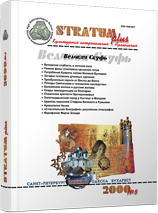История изучения псковско-новгородских длинных курганов
Study of Pskov-Novgorod Long Barrows: History
Author(s): Elena R. MikhailovaSubject(s): History, Archaeology, Middle Ages, 6th to 12th Centuries
Published by: Издательский дом Stratum, Университет «Высшая антропологическая школа»
Summary/Abstract: The article is dedicated to history of research of the Novgorod long mound burials.The first evidence about long mound burials dates to 1840s. They became subject to a special research, however, only in 1903, when A.A. Spitsyn related long and prolonged mound burials with the Kriviches of Letopis’ (Russian chronicles) and suggested that they should be dated by 9–10 cc. Ever since, the long barrows in one way or another have been subject of Slavic archaeology. Important landmarks in their research have been placed by the works by N.N. Chernjagin (1941), S.A. Tarakanova (1954), Ya. V. Stankevich (1960), V.V. Sedova (1960, 1974, 1995), M. Aun (1980, 1992). The main problems were: dating the long barrows, their ethnic and cultural belonging, emergence and development of the burial rite. Parallel to the scientific understanding, intense field works took place, to result in creation of archaeological maps in 1990. Since that time, research of Pskov-Novgorod long barrows has been focused on detailed study of specific microregions.
Journal: Stratum plus. Археология и культурная антропология
- Issue Year: 2000
- Issue No: 5
- Page Range: 32-49
- Page Count: 18
- Language: Russian
- Content File-PDF

